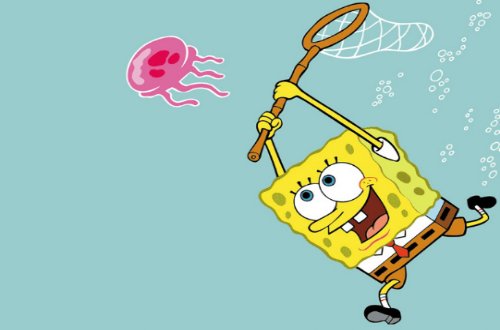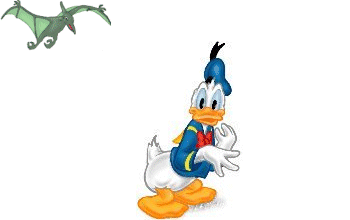Free Cartoon Animator Biography
Source (Google.com.pk)
Joseph Roland "Joe" Barbera (/bɑrˈbɛrə/ bar-berr-ə or /ˈbɑrbərə/ bar-bər-ə; March 24, 1911 – December 18, 2006) was an influential American animator, director, producer, storyboard artist, and cartoon artist, whose film and television cartoon characters entertained millions of fans worldwide for much of the twentieth century.
Through his young adult years, Barbera lived, attended college, and began his career in New York City. After working odd jobs and as a banker, Barbera joined Van Beuren Studios in 1932 and subsequently Terrytoons in 1936. In 1937, he moved to California and while working at Metro-Goldwyn-Mayer (MGM), Barbera met William Hanna. The two men began a collaboration that was at first best known for producing Tom and Jerry and live action films. In 1957, after MGM dissolved their animation department, they co-founded Hanna-Barbera, which became the most successful television animation studio in the business, producing programs such as The Flintstones, The Huckleberry Hound Show, Top Cat, Scooby-Doo, The Quick Draw McGraw Show, Yogi Bear, The Smurfs, Wacky Races, and The Jetsons. In 1967, Hanna-Barbera was sold to Taft Broadcasting for $12 million, but Hanna and Barbera remained head of the company until 1991. At that time, the studio was sold to Turner Broadcasting System, which in turn was merged with Time Warner, owners of Warner Bros., in 1996; Hanna and Barbera stayed on as advisors.
Hanna and Barbera won seven Academy Awards and eight Emmy Awards. Their cartoon shows have become cultural icons, and their cartoon characters have appeared in other media such as films, books, and toys. Hanna-Barbera's shows had a worldwide audience of over 300 million people in the 1960s and have been translated into more than 20 languages.Joseph Barbera was born at 10 Delancey Street in the Little Italy (Lower East Side) section of Manhattan, New York,[1] to immigrants Vincent Barbera and Francesca Calvacca, born in Sciacca, Agrigento, Sicily, Italy, and he grew up speaking Italian.[2]:17–18, 58, 128, 208[3][4] His family moved to Flatbush, Brooklyn, New York when he was four months old.[2]:17–18, 58[5] He had two younger brothers, Larry and Ted, both of whom served in World War II. As a member of the United States Army, Larry participated in the invasion of Sicily. Ted was a fighter pilot with the United States Army Air Forces and served in the Aleutian Islands Campaign.[2]:91–95 Barbera's father, Vincent, was the prosperous owner of three barbershops who squandered the family fortunes on gambling.[2]:19 By the time Barbera was 15, his father had abandoned the family and his maternal uncle Jim became a father figure to him.[2]:22–24
Barbera displayed a talent for drawing as early as the first grade.[2]:25–26 He graduated from Erasmus Hall High School in Brooklyn in 1928.[2]:23[6] While in high school, Barbera won several boxing titles. He was briefly managed by World Lightweight Boxing Champion Al Singer's manager but soon lost interest in boxing.[2]:30–32 In 1935, Barbera married his high school sweetheart, Dorothy Earl. In school, they had been known as "Romeo and Juliet".[2]:28
Barbera and his wife briefly separated when he went to California. They reunited but were on the verge of another separation when they discovered that Dorothy was pregnant with their first child. The marriage officially ended in 1963.[2]:58, 61, 66, 90, 129 Shortly after his divorce, Barbera met his second wife, Sheila Holden, at Musso & Frank's restaurant, where she worked as bookkeeper and cashier. Unlike Dorothy, who had preferred to stay at home with the children, Sheila enjoyed the Hollywood social scene that Barbera often frequented.[2]:137–139, 147[7]Lured by a substantial salary increase, Barbera left Terrytoons and New York for the new Metro-Goldwyn-Mayer (MGM) cartoon unit in California in 1937.[2]:58–59[8]:106 He found that Los Angeles was suffering just as much from the Great Depression as Brooklyn and almost returned to Brooklyn.[2]:201
Barbera's desk was opposite that of William Hanna. The two quickly realized they would make a good team.[10]:Foreword By 1939, they had solidified a partnership that would last over 60 years.[11][12] Barbera and Hanna worked alongside animator Tex Avery, who had created Daffy Duck and Bugs Bunny for Warner Bros. and directed Droopy cartoons at MGM.[10]:33[13]:18
Joseph Barbera first worked at MGM, as one of the directors of the Tom and Jerry shorts.
In 1940, Hanna and Barbera jointly directed Puss Gets the Boot, which was nominated for an Academy Award for Best (Cartoon) Short Subject.[14][15] The studio wanted a diversified cartoon portfolio, so despite the success of Puss Gets the Boot, Barbera and Hanna's supervisor, Fred Quimby, did not want to produce more cat and mouse cartoons believing that there were already enough cartoons of those in existence.[2]:75–76 Surprised by the success of Puss Gets the Boot, Barbera and Hanna ignored Quimby's resistance[10]:45 and continued developing the cat-and-mouse theme. By this time, however, Hanna wanted to return to working for Ising, to whom he felt very loyal. Barbera and Hanna met with Quimby, who discovered that although Ising had taken sole credit for producing Puss Gets the Boot, he never actually worked on it. Quimby then gave Hanna and Barbera permission to pursue their cat-and-mouse idea. The result was their most famous creation, Tom and Jerry.[2]:78–79
Modeled after the Puss Gets the Boot characters with slight differences, the series followed Jerry, the pesky rodent who continuously outwitted his feline foe, Tom.[16][17] Hanna said they settled on the cat and mouse theme for this cartoon because "we knew we needed two characters. We thought we needed conflict, and chase and action. And a cat after a mouse seemed like a good, basic thought."[18] The revamped characters first appeared in 1941's The Midnight Snack.[10]:46 Over the next 17 years, Barbera and Hanna worked exclusively on Tom and Jerry,[14] directing more than 114 popular cartoon shorts.[19] During World War II, they also made animated training films.[2]:92–93 Tom and Jerry relied mostly on motion instead of dialog.[12] Despite its popularity, Tom and Jerry has often been criticized as excessively violent.[20]:42[21]:134 Nonetheless, the series won its first Academy Award for the 11th short, The Yankee Doodle Mouse (1943)—a war-time adventure.[16] Tom and Jerry was ultimately nominated for 14 Academy Awards, winning 7.[22] No other character-based theatrical animated series has won more awards, nor has any other series featuring the same characters.[11][23] Tom and Jerry also made guest appearances in several of MGM's live-action films, including Anchors Aweigh (1945) and Invitation to the Dance (1956) with Gene Kelly, and Dangerous When Wet (1953) with Esther Williams.[23][24][25]
In addition to his work in animated cartoons, Barbera and Tom and Jerry layout artist Harvey Eisenberg moonlit to run a comic book company named Dearfield Publishing.[26] Active from 1946 to 1951, Dearfield's titles included "Red" Rabbit Comics, Foxy Fagan, and Junie Prom.[27][28]
Quimby accepted each Academy Award for Tom and Jerry without inviting Barbera and Hanna onstage. The cartoons were also released with Quimby listed as the sole producer, following the same practice for which he had condemned Ising.[2]:83–84 Quimby once delayed a promised raise to Barbera by six months .[2]:82 When Quimby retired in late 1955, Hanna and Barbera were placed in charge of MGM's animation division.[9][11] As MGM began to lose more revenue on animated cartoons due to television,[29][30] the studio soon realized that re-releasing old cartoons was far more profitable than producing new ones.[2]:2–3, 109 In 1957, MGM ordered Barbera and Hanna's business manager to close the cartoon division and lay off everyone by a phone call.[2]:2–3, 109 Barbera and Hanna found the no-notice closing puzzling because Tom and Jerry had been so successful.[23]
Free Cartoon Animator

Free Cartoon Animator

Free Cartoon Animator

Free Cartoon Animator

Free Cartoon Animator

Free Cartoon Animator

Free Cartoon Animator

Free Cartoon Animator

Free Cartoon Animator

Free Cartoon Animator

Free Cartoon Animator
No comments:
Post a Comment